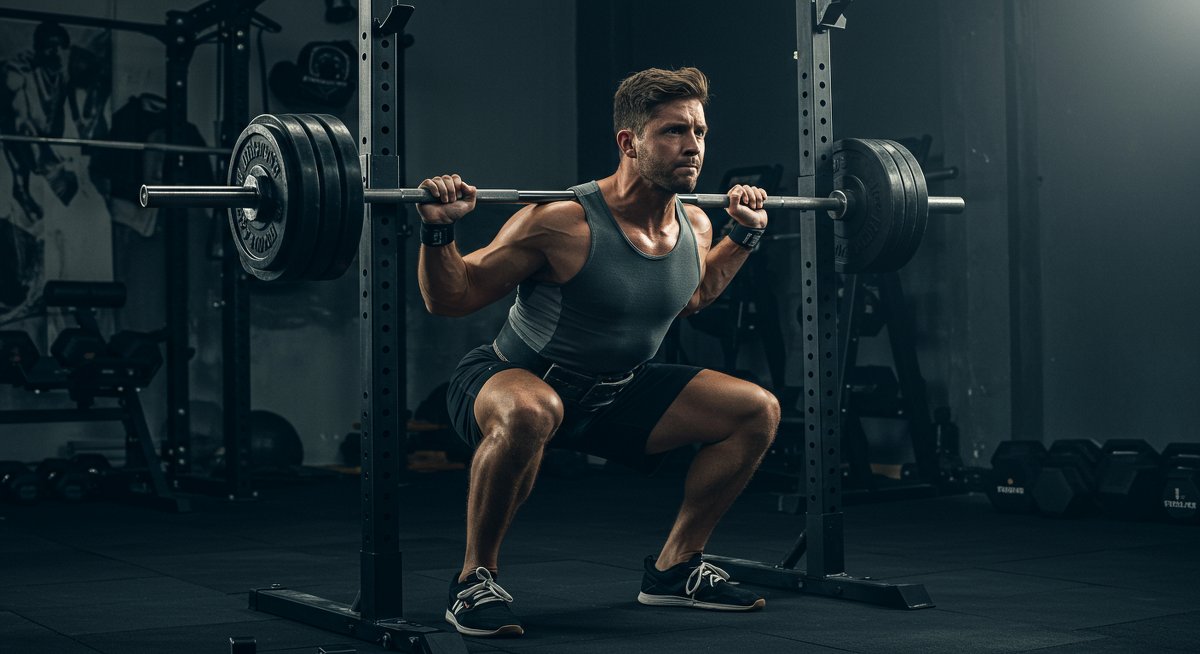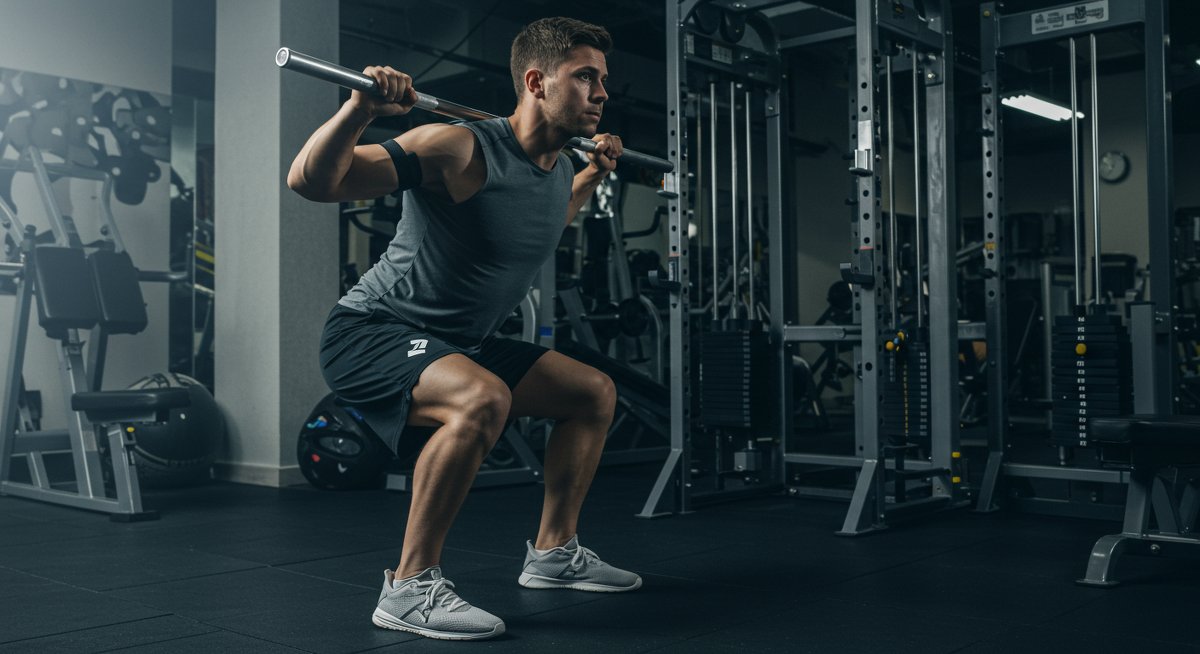Why This Caught My Eye
So, I was scrolling through r/homegym the other day, like I usually do, and something caught my eye. Someone posted about a new belt squat machine they snagged from Temu for just $263. Now, belt squat machines are usually pretty pricey, like $600 or more. So, naturally, I was skeptical. But the person in the post seemed genuinely impressed, saying it was lighter, had a smaller footprint, and performed just as well as the more expensive models. It got me thinking about the whole "budget vs. quality" debate when it comes to home gym equipment. Is it possible to build a decent home gym without breaking the bank? Or are you just throwing your money away on cheap stuff that's going to fall apart after a few months?
I've been there myself, tempted by those super cheap weights or that "amazing deal" on a multi-gym. Sometimes it works out, sometimes it doesn't. And with the rising costs of everything, building a home gym can feel like an impossible dream. But this Reddit post made me wonder if maybe, just maybe, there are some hidden gems out there that can help you get a great workout without emptying your wallet. Here's what I think.

Here's What Went Down
Okay, so let's dive a little deeper into this whole belt squat machine situation. The Redditor who bought it mentioned that it was lighter and had a smaller footprint than the more expensive models. This is a huge plus for anyone who's tight on space, like those of us trying to squeeze a gym into a spare bedroom or garage. They also said it performed just as well as the $600 ones, which is a pretty bold claim. But what does that actually mean? Are we talking about the same range of motion? The same stability? The same weight capacity? These are the kinds of questions that immediately popped into my head.
The comments on the post were interesting too. Some people were skeptical, pointing out the potential risks of buying cheap equipment, like poor construction, flimsy materials, and the possibility of injury. Others were curious, asking about the specific model and whether it was worth the risk. One person even mentioned that they had bought a similar piece of equipment from Temu and were pleasantly surprised by the quality. It seems like there's a real mix of experiences out there, which makes it even harder to know whether to take the plunge on something like this. But the original poster made a key point, that for many movements, the tolerances don't need to be that precise.
What This Means for Your Home Gym Dreams
So, what does all this mean for you? Well, if you're like me and you're always on the lookout for ways to save money on gym equipment, it's definitely worth considering the budget options. But it's also important to be realistic and do your research. Don't just assume that because something is cheap, it's going to be junk. And don't assume that because something is expensive, it's automatically high quality. There are plenty of overpriced pieces of equipment out there that aren't worth the money.
Think about what movements matter to you. If you are mostly doing squats, presses, and deadlifts, then you can get a lot done with a rack, a barbell, and some plates. If you are trying to do more specialized movements, then that is where the really expensive equipment comes in, and you might be able to save some money with less expensive alternatives.
Instead, take the time to read reviews, watch videos, and compare different models. Look for things like weight capacity, build quality, and warranty information. And don't be afraid to ask questions. Reach out to other people who have bought the equipment you're interested in and see what their experiences have been. You might be surprised at what you find.
The Part Nobody Likes to Talk About: The Risks
Okay, let's be real. Buying cheap gym equipment does come with risks. The materials might not be as durable, the construction might not be as solid, and the warranty might not be as comprehensive. And that means there's a higher chance that something could break, wear out, or even cause an injury. I'm not saying this to scare you off, but it's important to be aware of the potential downsides.
It is also important to know your limits. If you have been lifting for a while, you probably know what good form looks like, and what to look for in equipment. If you are relatively new to lifting, it can be harder to tell if a piece of equipment is well-made or not. In this case, it might be worth spending a little more money to get something that you know is going to be safe and reliable.
One of the biggest risks is that you might end up wasting your money on something that you can't use, or that breaks down quickly. I've seen it happen before. Someone buys a cheap treadmill, uses it a few times, and then it starts making weird noises or the belt starts slipping. And then they're stuck with a piece of junk that they can't return and can't sell. So, before you buy anything, make sure you understand the return policy and what your options are if something goes wrong.
Making It Work in Your Actual Life
Alright, so how do you actually make this whole budget home gym thing work in your life? The key is to be strategic and prioritize the things that are most important to you. Start by identifying your fitness goals and the types of workouts you enjoy doing. Do you love lifting weights? Or are you more into cardio? Or maybe a little bit of both? Once you know what you're trying to accomplish, you can start to narrow down the equipment you actually need.
Don't feel like you have to buy everything all at once. Start with a few essential pieces and then add more over time as your budget allows. For example, if you're into weightlifting, you might start with a barbell, some weights, and a squat rack. And then later on, you could add a bench, a pull-up bar, and some dumbbells. The important thing is to start somewhere and build from there.

Okay, Let's Get Practical
So, let's say you're ready to take the plunge and buy some budget gym equipment. Where do you start? Here's a step-by-step guide:
- Do your research: Read reviews, watch videos, and compare different models. Look for things like weight capacity, build quality, and warranty information.
- Set a budget: Decide how much you're willing to spend and stick to it. It's easy to get carried away when you see all the different options available, but it's important to stay within your means.
- Prioritize your needs: Focus on the equipment that's most important for your fitness goals and the types of workouts you enjoy doing.
- Shop around: Don't just buy the first thing you see. Compare prices from different retailers and look for sales and discounts.
- Read the fine print: Before you buy anything, make sure you understand the return policy and what your options are if something goes wrong.
- Start slow: Don't try to do too much too soon. Start with a few essential pieces of equipment and then add more over time as your budget allows.
- Be patient: Building a home gym takes time and effort. Don't get discouraged if you don't see results immediately. Just keep at it and you'll eventually reach your goals.
My Final Thoughts On All Of This
Look, building a home gym doesn't have to be expensive. With a little bit of research, planning, and patience, you can create a space that allows you to get a great workout without breaking the bank. Just remember to be realistic about your budget, prioritize your needs, and do your homework before you buy anything. And don't be afraid to take a chance on some of the budget options out there. You might be surprised at what you find. Maybe that $263 belt squat machine really is as good as the $600 ones. Or maybe it's not. But the only way to find out is to try it for yourself.
One thing I would add is to not get too caught up in having the "perfect" gym. The most important thing is that you have a space where you feel comfortable and motivated to workout. Whether that's a fully equipped home gym or just a corner of your living room with a yoga mat, it doesn't really matter. What matters is that you're moving your body and taking care of your health.